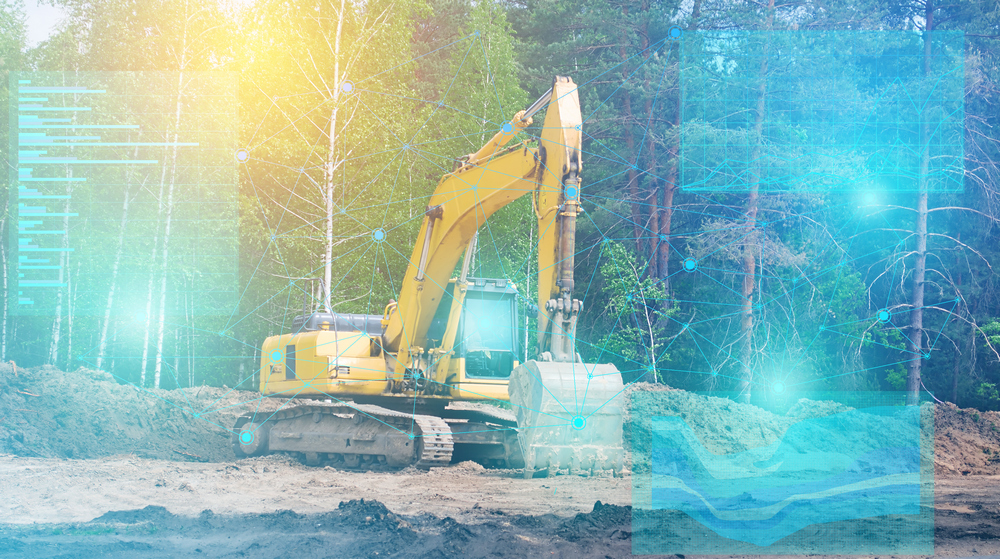
By Al Cervero
I grew up with visions of the future from TV shows like The Jetsons and Star Trek, optimistic depictions of the future that had one major thing in common: Machines and technology not just doing more of the day-to-day work, but allowing the people of their worlds to do more and live better, safer lives.
Recent leaps in technology over the past decade is starting to make the “distant future” seem closer than many of us expected.
The biggest leaps impacting the construction industry include power storage (batteries), digital imaging, global positioning technology, display technology, information transfer and machine learning. Let’s take a look at how these advancements are finding their way to superintendents and the jobsite.
Power storage
While a number of technologies go into the study and development of robotics, none of it could work without the ability to store large quantities of electricity in an affordable and reliable portable battery. That has been the biggest barrier to smart technologies in the construction world where power outlets aren’t out and about everywhere.
At this year’s CONEXPO-CON/AGG, a range of companies debuted all-electric equipment. Whether automated or human-controlled, this trend, according to a 2019 study from IDTechEx Research, will capture half of the off-road equipment market in the next decade.
Whether you’re concerned about environmental or financial impact, electrification of our equipment makes all the sense in the world.
Digital imaging
Look at the backside of your smartphone and see the camera lens(es) mounted and be amazed at how the future has already found us.
Combining that enhanced digital imaging with smart software, that camera can measure the distance between two points, determine if that berm is level across, measure a slope, make a 3D scan of a rock outcropping and scan and send the invoice to your client and accountant at the same time.
That’s before you even attach one to your equipment.
Today’s advances in digital imaging are making things like augmented reality, virtual reality, smart site management, artificial intelligence and machine learning possible. Using these technologies allows contractors to level the site faster, use survey data more accurately or simply incorporate change requests more quickly and profitably.
Global positioning technology
The global positioning system is a grid of 31 orbiting satellites that can pinpoint the location of a sensor anywhere in the world within less than a foot. That technology, combined with intelligent software and hardware, forms the basis of an entire sector of the construction equipment industry today.
Companies have made their way in the industry by combining GPS data, earthwork applications, jobsite base stations and equipment interoperability, combined with digital terrain plans, making site development and road building easier, more efficient and more accurate.
Display technology
The future is already developing for construction using the greater variety of digital displays available now.
More equipment manufacturers are using virtual machines to train new operators in a classroom with a seat and screen instead of a cab. Virtual and augmented reality headsets are using much smaller, but similarly high-resolution displays to create the project entirely, as well as see the different elements of the project on the site before they’re even built—which supports technicians in the field for quicker, more efficient repair.
Information transfer
Once again, smartphones have led the way for technological developments in construction.
Today, 4G/LTE networks support a maximum speed of 1 gigabit per second, which is pretty speedy. With that speed, you can send a 125 megabyte file in just one second. But 5G is expected to get up to 10 times that speed, meaning you can send more than a gigabyte of data in just a single second.
The speed of cellular data transfer is the key to construction applications.
Improvements in information transfer mean a remote excavator operator can wrap a job in New York on Friday and get ready for a job in Indiana on Monday, all while never leaving his office in Denver, Colorado. Remote operator technology was a big element at this year’s CONEXPO-CON/AGG, and the amount of data throughput needed to safely operate a machine that can hoist 40 tons of material from more than 20 feet below the surface without hurting anyone or damaging anything isn’t small. It also opens the door for a larger workforce with mobility-impaired operators, which now never have to leave their home.
Just as importantly, having half a dozen of those machines operating along with scrapers, dozers, bucket trucks, loaders, pavers, compacters and cranes without any of them running into each other means there’s a lot of data flowing back and forth.
That data pipeline is going to become even more important as more of that equipment becomes automated, or remotely operated. The equipment is already starting to transmit production data, tons moved in an hour, miles paved, aggregate pile capacity, thus making the billing processes and material on demand more efficient.
Ultimately, all these technologies, when combined, allow us to build things we’ve only ever seen on sci-fi TV shows, in time spans we have only ever joked about.
I’m excited about the future of technology on the jobsite. I’m even more excited to see what it allows us to transform from imagination into real life.
Al Cervero is senior vice president, technology, content & education, of Association of Equipment Manufacturers, a North America-based international trade group representing off-road equipment manufacturers and suppliers.


 Join our thriving community of 70,000+ superintendents and trade professionals on LinkedIn!
Join our thriving community of 70,000+ superintendents and trade professionals on LinkedIn! Search our job board for your next opportunity, or post an opening within your company.
Search our job board for your next opportunity, or post an opening within your company. Subscribe to our monthly
Construction Superintendent eNewsletter and stay current.
Subscribe to our monthly
Construction Superintendent eNewsletter and stay current.